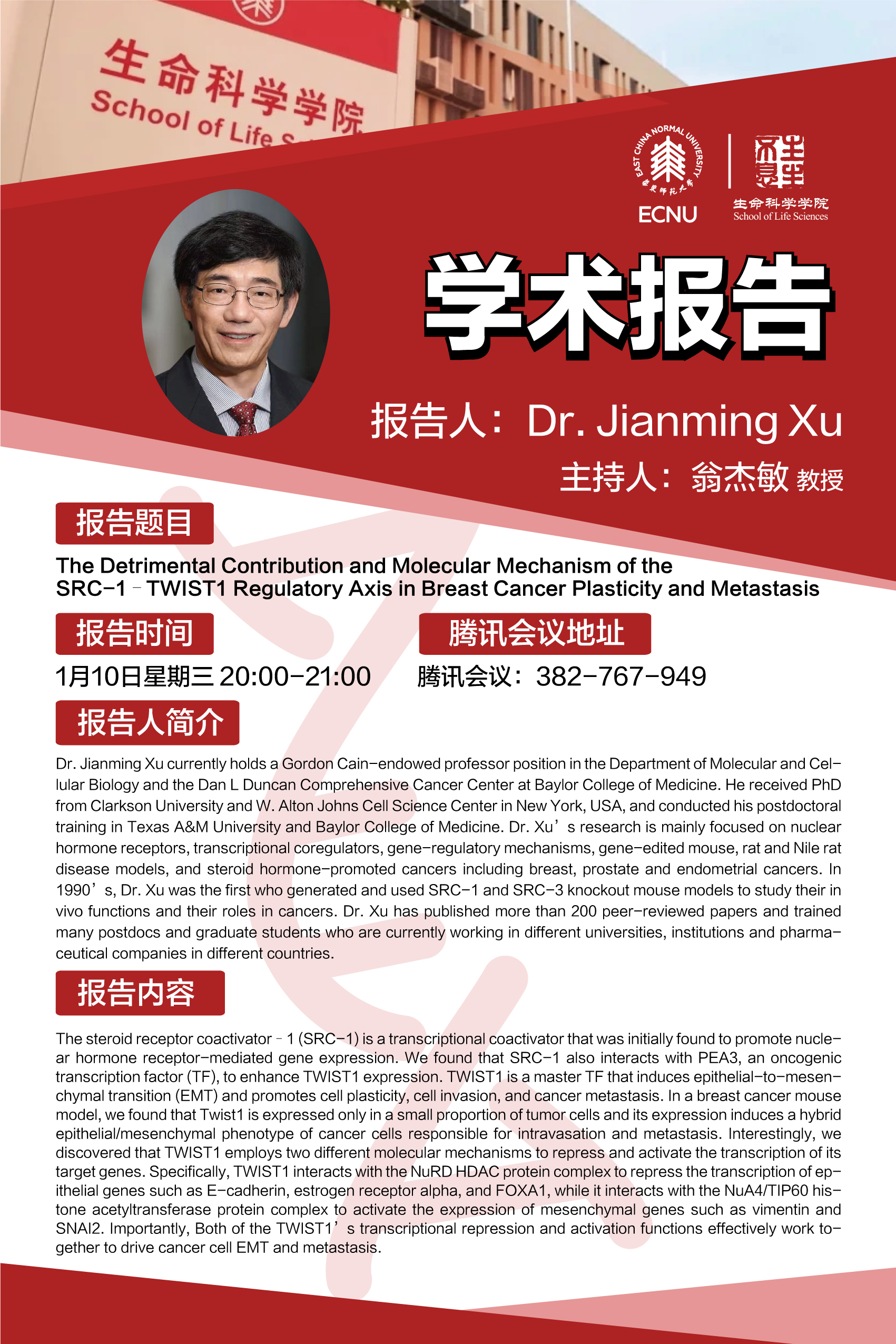



报告题目:The Detrimental Contribution and Molecular Mechanism of the SRC-1–TWIST1 Regulatory Axis in Breast Cancer Plasticity and Metastasis
主 讲 人: Dr. Jianming Xu
主 持 人: 翁杰敏 教授
腾讯会议:382-767-949
报告时间: 2024年1月10日 20:00—21:00
个人简介:
Dr. Jianming Xu currently holds a Gordon Cain-endowed professor position in the Department of Molecular and Cellular Biology and the Dan L Duncan Comprehensive Cancer Center at Baylor College of Medicine. He received PhD from Clarkson University and W. Alton Johns Cell Science Center in New York, USA, and conducted his postdoctoral training in Texas A&M University and Baylor College of Medicine. Dr. Xu’s research is mainly focused on nuclear hormone receptors, transcriptional coregulators, gene-regulatory mechanisms, gene-edited mouse, rat and Nile rat disease models, and steroid hormone-promoted cancers including breast, prostate and endometrial cancers. In 1990’s, Dr. Xu was the first who generated and used SRC-1 and SRC-3 knockout mouse models to study their in vivo functions and their roles in cancers. Dr. Xu has published more than 200 peer-reviewed papers and trained many postdocs and graduate students who are currently working in different universities, institutions and pharmaceutical companies in different countries.
报告简介:
The steroid receptor coactivator–1 (SRC-1) is a transcriptional coactivator that was initially found to promote nuclear hormone receptor-mediated gene expression. We found that SRC-1 also interacts with PEA3, an oncogenic transcription factor (TF), to enhance TWIST1 expression. TWIST1 is a master TF that induces epithelial-to-mesenchymal transition (EMT) and promotes cell plasticity, cell invasion, and cancer metastasis. In a breast cancer mouse model, we found that Twist1 is expressed only in a small proportion of tumor cells and its expression induces a hybrid epithelial/mesenchymal phenotype of cancer cells responsible for intravasation and metastasis. Interestingly, we discovered that TWIST1 employs two different molecular mechanisms to repress and activate the transcription of its target genes. Specifically, TWIST1 interacts with the NuRD HDAC protein complex to repress the transcription of epithelial genes such as E-cadherin, estrogen receptor alpha, and FOXA1, while it interacts with the NuA4/TIP60 histone acetyltransferase protein complex to activate the expression of mesenchymal genes such as vimentin and SNAI2. Importantly, Both of the TWIST1’s transcriptional repression and activation functions effectively work together to drive cancer cell EMT and metastasis.
